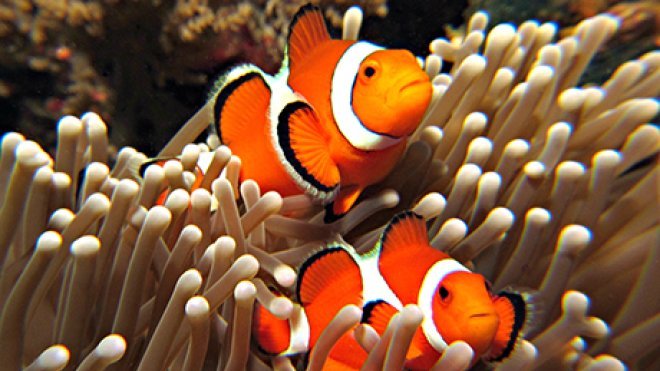Researchers Win Grand Prize to Develop Technology to Stop Illegal Wildlife Trafficking
Anderson Cabot Center for Ocean Life at New England Aquarium, Roger Williams University one of four winners internationally

BOSTON – The Anderson Cabot Center for Ocean Life at the New England Aquarium and Roger Williams University won a prestigious award recently to develop technology that will help port inspectors find illegally hidden wildlife and help stem wildlife trafficking in the U.S. They are one of four grand prize winners to receive the inaugural Wildlife Crime Tech Challenge award from the U.S. Agency for International Development (USAID).
The Aquarium’s Michael Tlusty and Roger Williams’s Andrew Rhyne submitted their proposal to USAID’s Wildlife Crime Tech Challenge, which is funding a combined $900,000 to the Aquarium, New York University, University of Washington, and the National Whistleblower Center to design innovative science and technology solutions to combat illegal marine and terrestrial wildlife trafficking. More than 300 groups applied for the award internationally.
“We are delighted to be part of a worldwide effort to develop effective solutions to this growing and widespread problem by developing technology that can stop traffickers at the point of entering our country and causing damage, ecologically and economically,” said Tlusty, who works with Rhyne on aquaculture research and the aquarium fish trade.
“We want the wildlife trade to be more transparent, accountable, and sustainable,” added Rhyne, an associate professor of marine biology at RWU and research scientist at the Aquarium. “Our technology gives port inspectors the tools to more effectively do their jobs. Designed to evaluate any wildlife shipment, this technology will have a broad reach into all of the wildlife trade."
The problem is that illicit wildlife trade is hidden in legally documented shipments because there is not an existing system to analyze shipments for individual species in each box in real time. So, Tlusty and Rhyne want to develop an Automated Shipment Forensics tablet-based method that uses “smart invoice” technology to help port inspectors better assess shipments. Automated Shipment Forensics uses computer vision to convert the paper shipping declaration and invoices into a digital format. It then conducts real-time forensic analyses on shipment information and determines a pattern-matched probability assessment of illegal trade. By having real-time forensics on suspicious trade activity, the technology would eliminate the need for port agents to manually sift through paper invoices so they can act more quickly.
“Much illegal trade happens because port agents are overwhelmed in paperwork,” said Tlusty, who is also the Aquarium’s Director of Ocean Sustainability Science. “We are creating a solution to help them find illegal wildlife hidden in the mounds of paperwork.”
Illegal wildlife trafficking is now one of USAID’s highest priorities because it undermines the country’s conservation work, economic prospects, and security. By working directly with wildlife rangers, airline employees, customs agents, and others, the agency’s goal is to decrease illegal wildlife trade. The agency has tripled its support to address this issue with more than $67 million being invested in the 2015 fiscal year budget to stop poachers and traffickers. The Challenge initiative is being implemented in partnership with the National Geographic Society, the Smithsonian Institution, and TRAFFIC, led by USAID.
“In addition to threatening some of the world’s most treasured species, wildlife crime poses serious risks to people, economies, and global security,” said USAID Administrator Gayle Smith. “That’s why USAID is proud to support the four Grand Prize Winners of the Wildlife Crime Tech Challenge. By harnessing the power of science and technology to root out poaching and trafficking, these remarkable innovators will ultimately help make the world a safer and more prosperous place for all of us.”
Over Labor Day Weekend, the winners were featured at the World Conservation Union’s (IUCN) World Conservation Congress in Honolulu, Hawaii from Sept. 1 to 10.